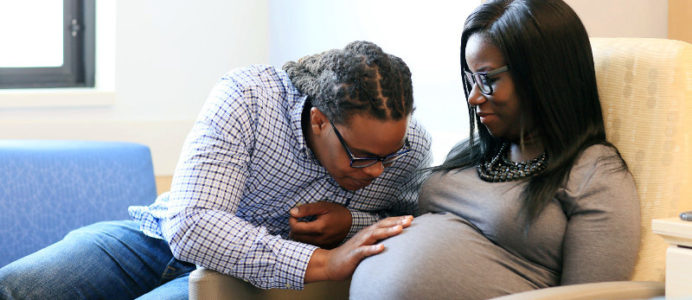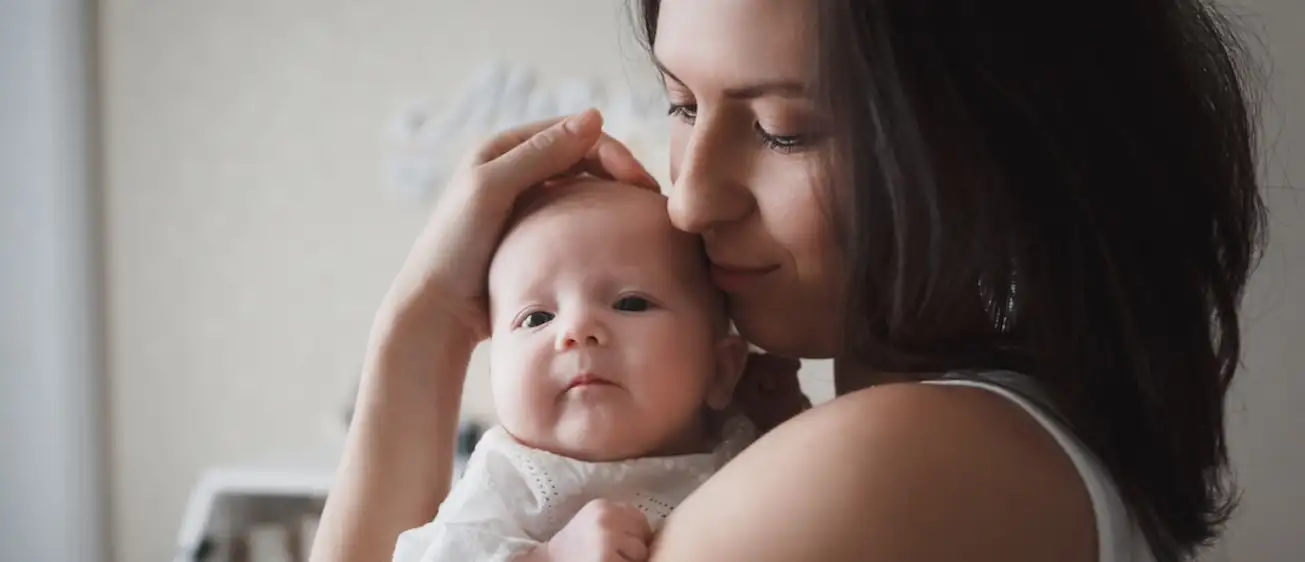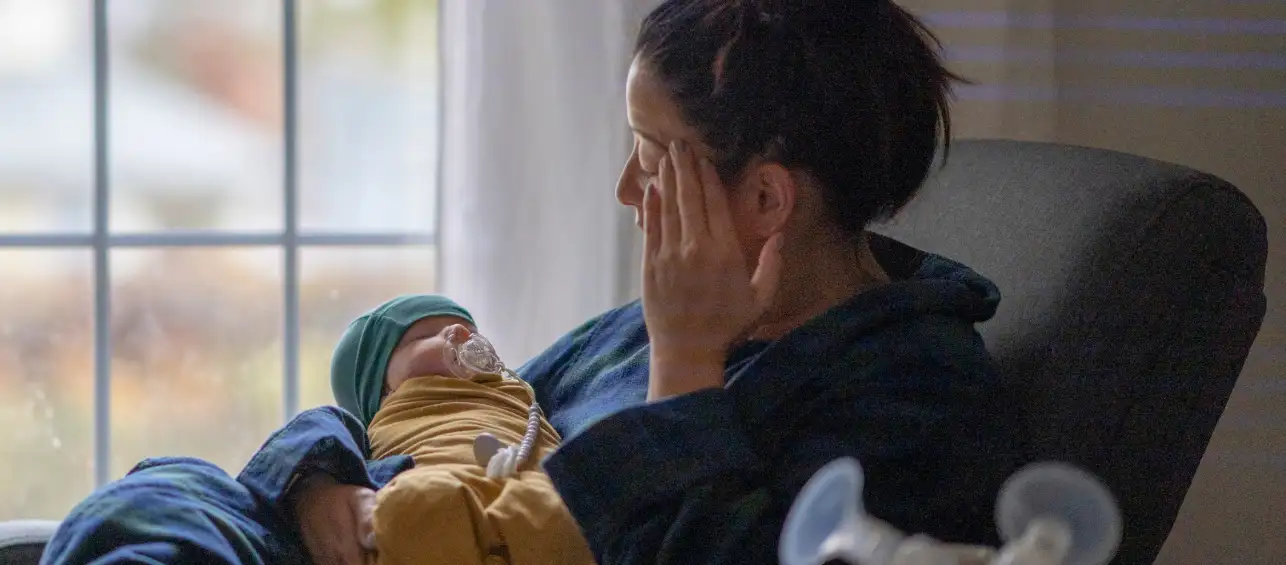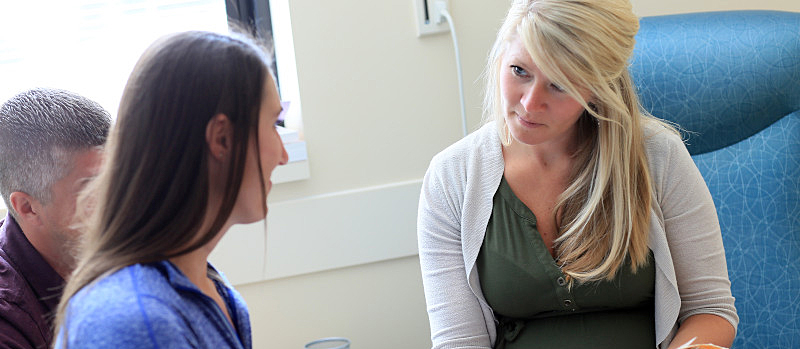Many parents are overwhelmed with excitement when they discover they’re expecting a baby. Additional emotions may arise, however, when they learn that their baby has a birth defect. Understandably, confusion, blame, sadness and worry are among the most prominent feelings.
As a fetal-pediatric surgeon in the Cincinnati Children’s Fetal Care Center, I encounter families around this stage in their pregnancy. They’ve either just learned that they’re expecting a baby with a birth defect and we’re their next stop; or, they’ve been to another institution and are looking for a second opinion.
In either case, it’s our goal to provide families with the most clear and accurate information we can to help them understand their baby’s situation and options. We’ve found that covering the following topics has helped families move from the initial diagnosis phase into the decision making phase. If you’ve just learned that your baby has a birth defect, consider finding an institution that will walk you through the following steps, so that you can better understand your options moving forward.
Receiving a Birth Defect Diagnosis: Help with Understanding Your Options
Provide one clear message
In many instances, families have learned a lot about their baby’s condition before they walk through our doors. Some of it is accurate, some not. Birth defects are often highly complex and may require treatment and expertise from many different medical specialty areas. Our goal is to minimize confusion and to get everyone, including our own specialists, on the same page. We do this by hosting “team meetings.”
Our team meetings include all of the specialists who might need to be involved in the baby’s care. This often means more than 2-3 physicians, and at times 6-7 physicians in the room with the mother and her support person. We also invite additional members of the mother’s support system to attend via tele-conferencing.
We have found that having one clear message, as an outcome of these team meetings, helps families feel more confident in their decision-making.
Minimize guilt
Understandably, families come to us bearing the weight of many emotions. One of the most prominent is guilt. Parents, especially mothers, often feel like they did something to cause the birth defect. We focus heavily on this emotion because once parents work through their feelings of guilt, they are better able to move forward. In turn, they’re also more likely to take care of themselves. Good self-care is an important part of having a healthy baby.
Birth defects happen in 1% of births. While it’s important to take steps to avoid “preventable” birth defects, more often than not, these birth defects occurred despite everything parents did. The unfortunate reality is that we often don’t know what causes them. We are discovering that birth defects once thought of as “flukes” were actually a micro-deletion of a chromosome. We need to continue conducting research to understand the disease processes better.
Provide treatment options
Different treatment options for birth defects are dependent upon the diagnosis of the baby. Some conditions can be managed medically, while others may need surgical intervention in utero or after the delivery. It’s important to find a center that is clear about the conditions they are capable of managing, as well as willing to share their outcomes data . This means how many procedures they’ve performed as well as survival information. We have evaluated over 7,400 high-risk pregnancies since 2004 and have performed more than 1,850 fetal procedures on these patients. Here are a few examples of some conditions we routinely treat and intervene surgically:
- Twin-Twin Transfusion Syndrome(TTTS): We routinely intervene in utero when babies have this condition. We have performed over 1,300 surgical interventions.
- Spina bifida/Myelomeningocele/Meningocele: We don’t repair all types; just the most severe. We have performed over 150 open and fetoscopic procedures.
- Bladder Outlet Obstruction (BOO): Our physicians have evaluated more than 500 patients for bladder outlet obstruction. Extensive experience and expertise allow our team to treat the most complex cases.
- Fetal tumors: We have evaluated more than 144 patients for fetal tumors, including cervical, mediastinal, sacrococcygeal teratomas, neuroblastoma and renal masses.
- Congenital diaphragmatic hernia(CDH): Our Fetal Care Center is one of few places in the nation to offer fetoscopic endoluminal tracheal occlusion (FETO), a minimally invasive surgical procedure to treat the most severe cases of CDH. Our surgeons have performed more than 40 FETO procedures with an 86% survival rate post FETO. All babies post FETO treatment were discharged without oxygen supplementation to date.
Support for the whole family
We have found that mom and baby have better outcomes when the baby’s community is well supported. I recommend finding a center that has dedicated social workers, genetic counselors, palliative care and nurse coordinators that provide support and counseling to the entire family.
I chose to become a fetal-pediatric surgeon because when I was doing my training, I saw the potential impact this specialty can make. It is possible to alter the natural history of some high-risk birth defects or to correct some birth defects early before they turn into something that is irreversible. We can continue to improve not only the outcome of the baby but decrease maternal risk related to the fetal surgery. Nothing is more rewarding than diagnosing a problem, helping patients through pregnancy and watching these babies grow up.
To learn more about the Cincinnati Children’s Fetal Care Center, please call 1-888-338-2559 or fill out an online form for more information.






Forever grateful for you, Dr. Lim, as well as our entire team 6 years ago at the Fetal Care Center. Although Tommy ultimately was meant for Heaven, you provided us with the most amazing care and love.
Talk to a healthcare provider about taking any medications. We know that certain medications can cause serious birth defects if they are taken during pregnancy. For many medications taken by pregnant women, the safety has been difficult to determine. Despite the limited safety data, some medications are needed to treat serious conditions. If a woman is pregnant or planning a pregnancy, she should not stop taking medications she needs or begin taking new medications without first talking with her healthcare provider. This includes prescription and over-the-counter medications and dietary or herbal products. Learn more about medication and pregnancy